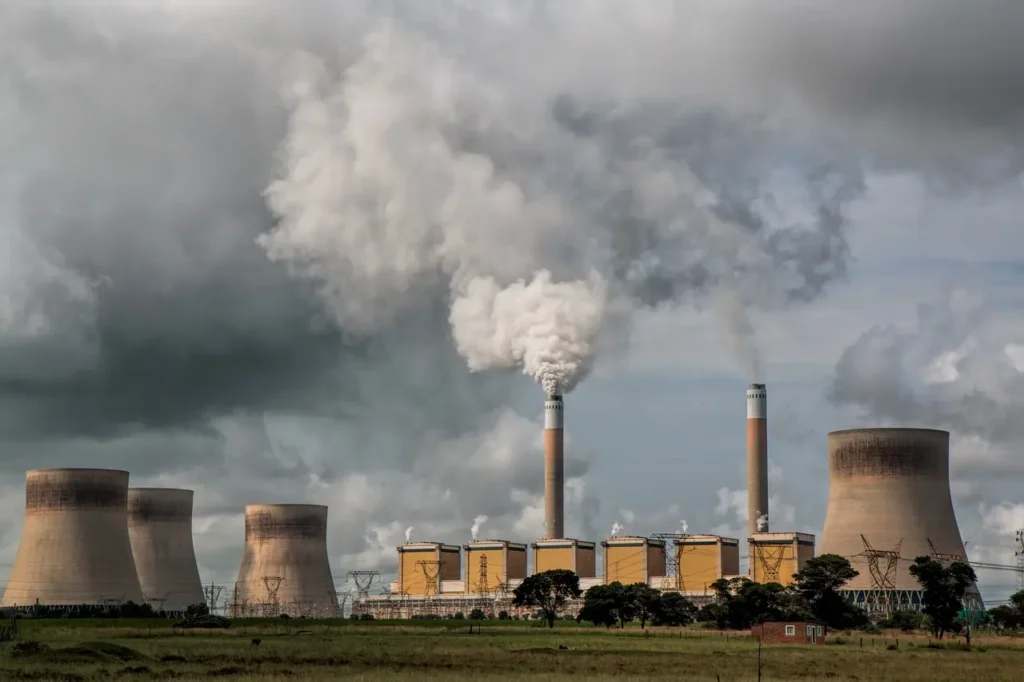
What Is Electricity?
10 minute read • Last update January 2024
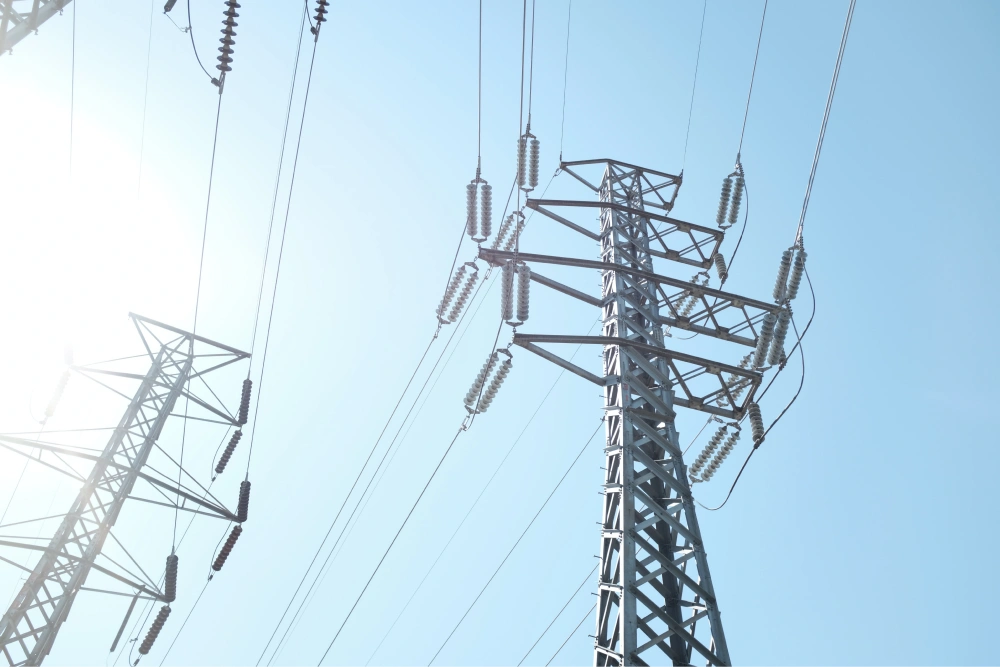
In this article
Electricity, the driving force behind our modern lives, is a fundamental concept that has shaped the course of human civilization. It’s an enigmatic phenomenon that fuels our homes, industries, and technologies, connecting the world in ways that were once unimaginable. But what is electricity, and how does it manifest in our daily lives?
What is Electricity?
In short, electricity is the movement of electrical charge. To understand electrical charge, you have to understand the makeup of an atom. There are positively-charged protons and neutrons with no charge in the atom’s core or nucleus. Around the nucleus, there are negatively charged electrons. Electrons aren’t always bound to the same atom – they can be moved.
To put it simply, when power plants are generating electricity, the process forces the movement of electrons between atoms and that forced movement is what allows us to generate, harness, and distribute electricity.
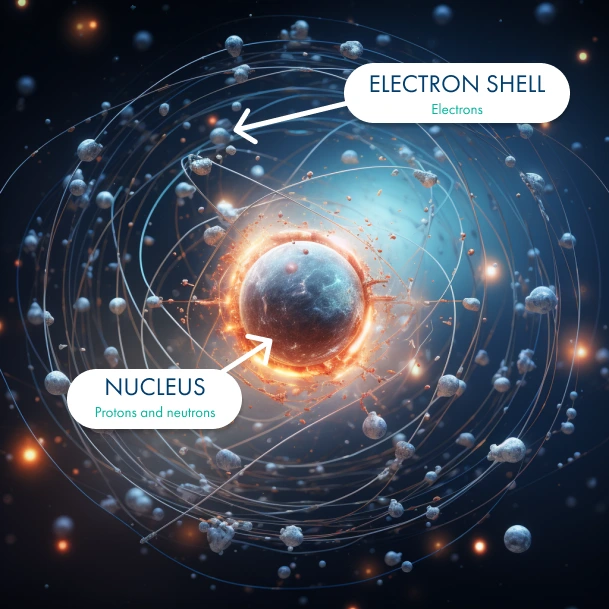
Electricity is a force of nature, intricately intertwined with magnetism, forming the foundation of electromagnetism—a unifying theory that underpins the behavior of charged particles and their interactions with electromagnetic fields.
Electricity powers a vast array of modern technologies and conveniences, from lights and appliances to computers and smartphones. It plays a critical role in our daily lives, fueling economic development and improving the overall quality of life.
Electricity can exist in two main forms: static electricity and current electricity.
- Static Electricity: This form of electricity results from the buildup of electrical charges on an object’s surface, which can be caused by friction or contact between different materials. When this charge buildup is released, it can cause a spark or shock as the electrons jump to a nearby object with a lower charge.
- Current Electricity: This is the flow of electrical charges through a conductor, such as a wire. There are two types of current electricity: direct current (DC) and alternating current (AC). In DC, the flow of electrical charges is constant and unidirectional, while in AC, the flow of charges alternates direction periodically.
When Was Electricity Discovered?
Because we’ve only utilized electricity to power lights and appliances (and more) since the late 1800s, it may come as a surprise that humans have known about electricity for thousands of years.
- The ancient Greeks observed the attractive properties of amber around 600 BC, an early hint at the existence of static electricity.
- Benjamin Franklin’s 1752 kite experiment established the link between lightning and electricity, a crucial discovery in electrical science.
- Alessandro Volta’s creation of the voltaic pile in 1800 marked the birth of the chemical battery, providing a continuous source of electric current.
- Michael Faraday’s experiments on electromagnetic induction in the 19th century laid the foundation for our understanding of how changing magnetic fields generate electric currents.
These milestones set the stage for the subsequent explosion of knowledge and technological advancement in the field of electricity.
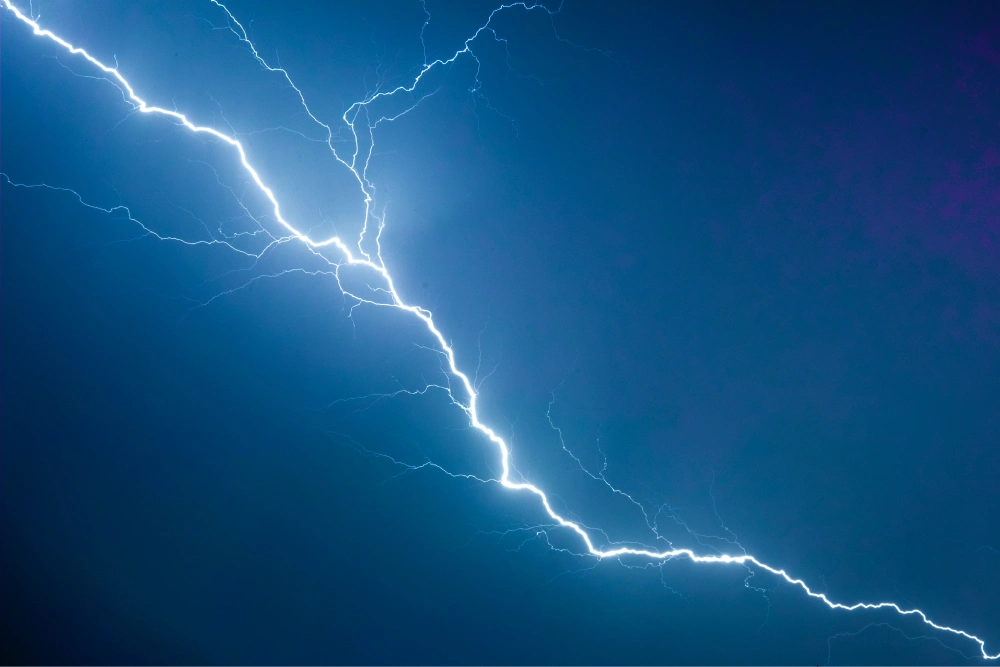
Diving Deeper Into How Electricity Works
In order to understand what electricity is and how it works, you can start with the concept of the structure of the atom.
Atomic Composition
All matter, whether solid, liquid, or gas, is composed of atoms. These atoms are the building blocks of the universe, and within them reside even smaller particles: protons, neutrons, and electrons.
Protons and Neutrons
At the nucleus, or central core, of an atom, we find protons and neutrons. Protons carry a positive electrical charge, and neutrons have no charge at all. Together, they form the dense core of the atom, a nucleus that holds the atom’s mass and stability.
Electrons in Motion
In contrast to the densely packed nucleus, electrons orbit the nucleus at varying energy levels, or “shells.” Electrons are negatively charged, and their movement around the nucleus forms a dynamic cloud of negative charge that balances the positive charge of the protons within the nucleus.
Electric Current Creation
It’s the behavior of these electrons that is central to the creation of electric current. When electrons are set in motion—either by an external force like a voltage source or by changes in energy levels within the atom—a flow of electric charge is generated. This movement of electrons is what we refer to as an electric current.
Conductive Pathways
For an electric current to flow through a material, it requires a conductive pathway. Conductive materials, such as metals like copper and aluminum, possess atoms that allow electrons to move freely within their structures. This movement of charged particles along the conductive pathway constitutes the flow of electric current.
Measurement of Electric Current
The intensity of an electric current is measured in units known as amperes, often referred to as “amps.” One ampere represents a flow of one coulomb of charge per second. This unit quantifies the rate of flow of electric charge, indicating the number of electrons passing through a point in a circuit per unit of time.
Voltage and Resistance
As we delve deeper into the world of electricity, we encounter concepts like voltage, resistance, and the profound relationship between electric and magnetic fields, all of which collectively shape our modern technological landscape.
- Voltage as Driving Force: Voltage, or electric potential difference, provides the “push” that propels electrons to move. It’s measured in volts.
- Electric Field Creation: Voltage creates an electric field, encouraging the movement of electrons along a conductive pathway.
- Resistance to Flow: Resistance opposes the flow of electrons, similar to friction slowing down a moving object.
- Measurement of Resistance: Resistance is measured in ohms and is influenced by factors such as material conductivity, dimensions, and temperature.
- Ohm’s Law Relationship: Ohm’s law, a fundamental principle, establishes the relationship between voltage (V), current (I), and resistance (R), expressed as V = I * R.
- Balancing Forces: Ohm’s law underscores the balance between the driving force (voltage) and the factors hindering flow (resistance) to determine the resulting current.
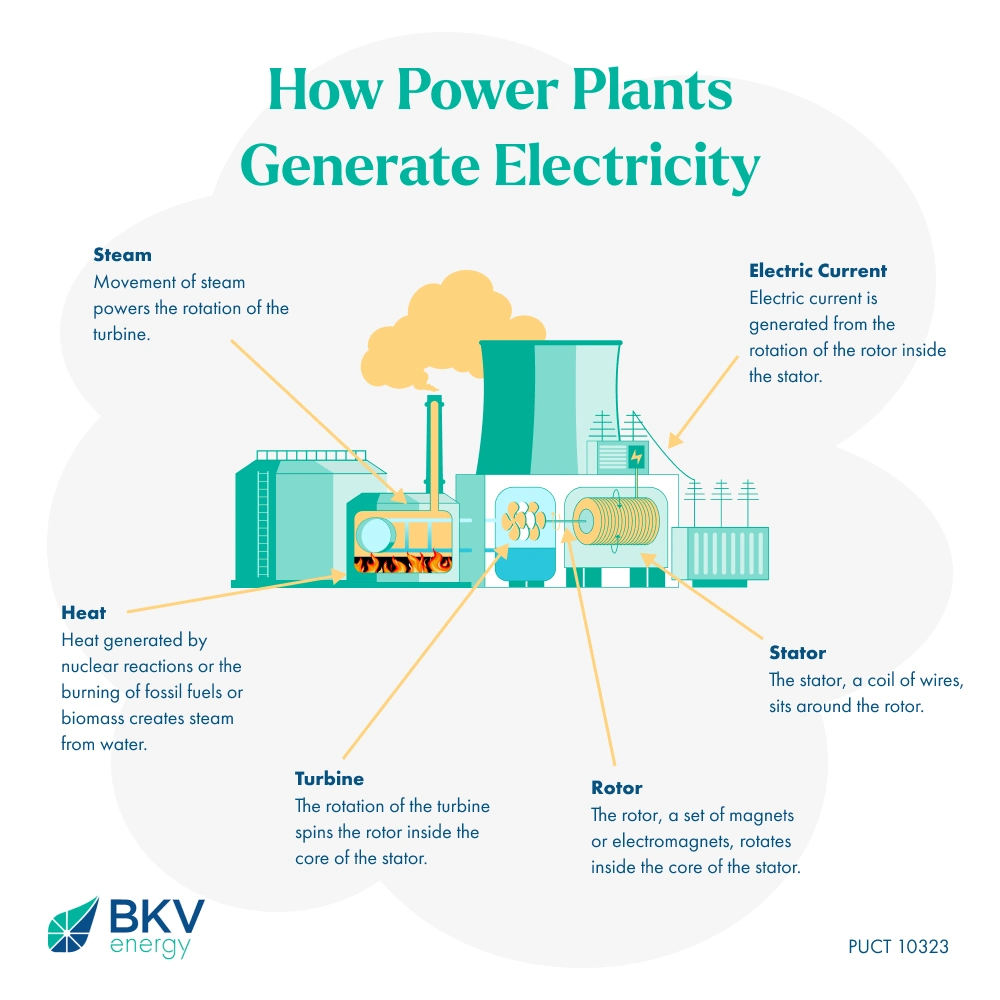
What is Electromagnetism?
One of the most profound things about electricity is the intimate connection between electricity and magnetism, known as electromagnetism.
- Electromagnetism is the branch of physics that deals with the interaction between electric currents and magnetic fields.
- It was unified as a single force by James Clerk Maxwell’s equations, showing that electric and magnetic fields are interrelated.
- Michael Faraday’s experiments discovered that changing magnetic fields induce electric currents, giving rise to electromagnetic induction.
- Electromagnetic waves, including radio waves, microwaves, infrared, visible light, ultraviolet, X-rays, and gamma rays, are fundamental to communication and understanding the universe.
- Electromagnets are created by running an electric current through a coil of wire, generating a magnetic field. They have various applications, from lifting heavy objects to powering MRI machines.
- The Earth’s magnetic field, generated by the movement of molten iron in its core, plays a crucial role in protecting us from harmful solar radiation.
- Electromagnetic forces govern the behavior of charged particles in atoms, leading to chemical bonding and the formation of molecules.
- Electromagnetic compatibility (EMC) ensures that electronic devices can coexist without interfering with each other due to their electromagnetic emissions.
- Electromagnetic radiation, such as visible light, is a form of energy that travels through space in waves, behaving both as particles (photons) and waves.
How Electricity Impacts Modern Life
Revolutionizing Communication
One of the most profound impacts of electricity is the way it has transformed communication. From telegraphs and telephones to the internet and smartphones, electricity has made it possible to connect with people across the globe instantly.
Illuminating the World
Before the widespread use of electricity, people relied on candles, oil lamps, and daylight for illumination. Electric lighting has extended the productive hours of the day, enabling people to work, study, and engage in leisure activities long after the sun has set.
Transforming Transportation
Electric trains, trams, and more recently, electric cars and buses have changed the way we travel. Electrified transportation is not only more efficient but also helps reduce air pollution and dependence on fossil fuels.
Improving Healthcare
Electricity has been a game-changer in the field of healthcare. It powers life-saving equipment like defibrillators and ventilators, enables complex surgeries with precision instruments, and supports advanced diagnostic tools like MRI machines and X-rays.
Enhancing Entertainment
Electricity has given birth to an array of entertainment options. Radios, televisions, gaming consoles, and home theaters have become integral parts of our lives, offering endless entertainment at the flick of a switch.
Empowering Productivity
Electric tools and machinery have revolutionized industries, from manufacturing to agriculture. Electricity has made production faster, more efficient, and less labor-intensive, boosting economic growth and development.
Facilitating Convenience
Modern conveniences like refrigerators, washing machines, and air conditioners have improved the quality of life for many. These appliances, powered by electricity, have made everyday tasks easier and more comfortable.
Spurring Technological Advancements
Electricity has been the driving force behind countless technological advancements. Computers, the internet, and smart devices have transformed the way we live, work, and interact, reshaping society in the process.
What to Know About Electric Energy Currents
Electricity comes in two intriguing forms: alternating current (AC) and direct current (DC). These currents have shaped the way we distribute and utilize electrical energy, each with its unique advantages and applications.
- Electric current is the flow of electric charge (usually carried by electrons) through a conductor.
- It’s measured in units called amperes (amps), representing the rate of flow of electric charge.
- The direction of electric current is opposite to the movement of electrons, as historically defined by Benjamin Franklin.
- The War of Currents, a legendary rivalry between Thomas Edison and Nikola Tesla, epitomized the battle between DC and AC systems for dominance in electricity distribution.
- The superiority of alternating current (AC) triumphed in this rivalry, becoming the foundation of modern power grids.
- The frequency of AC is measured in hertz (Hz), indicating how many complete cycles occur per second.
- Electric currents generate magnetic fields, a principle known as electromagnetism, which is utilized in electric motors, generators, and transformers.
- Electric currents have various applications, from powering appliances and devices to driving electric vehicles and transmitting data in computer circuits.
Facts About Electrical Energy Generation
The methods of generating electricity have undergone a dramatic evolution over time, from steam engines in the Industrial Revolution to modern processes.
- Fossil Fuels: As of 2022, fossil fuels were still the largest source of electricity generation in the United States, accounting for about 60% of the total. This includes coal (19.5%), natural gas (39.8%), and oil (less than .6%). However, the share of fossil fuels in electricity generation has been declining, mainly due to the rise of renewables.
- Nuclear Power: The U.S. currently has over 90 nuclear power plants. As of 2022, nuclear power provided about 18.2% of the country’s electricity.
- Solar and Wind Power: Solar PV generation increased by a record 270 TWh (up 26%) in 2022, reaching almost 1 300 TWh. It demonstrated the largest absolute generation growth of all renewable technologies in 2022, surpassing wind for the first time in history. That said, wind electricity generation increased by a record 265 TWh (up 14%), reaching more than 2 100 TWh.
- Hydroelectric Power: Hydropower is the most widely-used renewable energy source, accounting for around 6.2% of the electricity generated in the United States in 2022.
- Geothermal Power: Geothermal electricity generation is currently less common, contributing about 0.4% of the United States’ total electricity. As of 2021, there were about 13.3 GW of geothermal power capacity installed worldwide.
- Transition to Greener Energy: The share of renewables in electric generation was around 21.5% across the country. This transition is crucial for reducing greenhouse gas emissions and combating climate change.
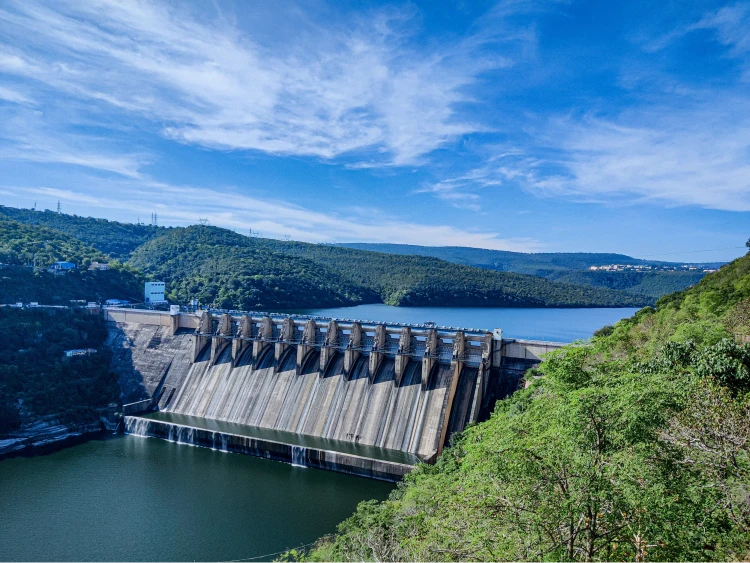
What the Future Holds for Electricity
As look past current electricity facts and into the future, these predictions about the future of electricity might come to fruition:
Decentralized Energy Production
In the future, we could see a shift from large, centralized power plants to smaller, distributed energy production systems. More homes and businesses may generate their own electricity through solar panels, wind turbines, and other renewable sources, leading to a more decentralized and resilient energy grid.
Energy Storage Breakthroughs
As renewable energy sources become more prevalent, efficient energy storage solutions will become crucial. Breakthroughs in battery technology, such as solid-state batteries or flow batteries, could provide longer-lasting and more efficient energy storage, enabling a greater reliance on renewable energy.
Smart Grids
Advanced technologies like machine learning, artificial intelligence, and IoT will revolutionize the way electricity is distributed and consumed. Smart grids will be able to predict and respond to changes in demand, optimize energy distribution, and integrate seamlessly with renewable energy sources.
Electrification of Transportation
Electric vehicles (EVs) are already on the rise, and this trend is expected to continue. In the future, we may see a fully electrified transportation sector, including not only passenger cars but also buses, trucks, and even ships. This shift could dramatically reduce emissions and pollution from transportation.
Wireless Energy Transmission
While wireless charging for small devices is already a reality, future advancements in technology may enable long-distance wireless energy transmission. This could eliminate the need for power lines and make it easier to bring electricity to remote and inaccessible areas.
Hydrogen Economy
Hydrogen has the potential to become a significant energy carrier in the future, as it can be produced from renewable energy sources and used in fuel cells to generate electricity. A hydrogen economy could provide a sustainable and efficient way to store and transport energy.
Nuclear Fusion
Although nuclear fusion has been elusive for decades, breakthroughs in this field could provide a virtually limitless and clean energy source. Fusion reactors would produce minimal radioactive waste and could revolutionize the way we generate electricity.
Global Electrification
As technology improves and becomes more affordable, electricity could become accessible to millions of people currently living without it. This would have a profound impact on global development, improving education, healthcare, and economic opportunities for countless individuals.
Energy Efficiency Improvements
Future advancements in technology and materials science may lead to significant gains in energy efficiency. Energy-efficient appliances, smart buildings, and better insulation could reduce energy consumption and decrease our overall carbon footprint.
Flexible Energy Markets
As more players enter the energy market, from individual homeowners with solar panels to large corporations investing in renewable energy, the dynamics of energy markets could change. Peer-to-peer energy trading and dynamic pricing models could become more prevalent, giving consumers more control over their energy consumption and costs.
Pioneering the Future with BKV Energy
The force of electricity has captured the imagination of scientists, inventors, and curious minds throughout history and continues to shape our world in transformative ways. From the early sparks of static electricity to the complex interconnected grids that power entire nations, the journey of electricity is a testament to human ingenuity.
Responsible energy consumption and groundbreaking innovations required to for that responsible consumption remain paramount.
Amid this landscape of progress, one standout player in the energy sector is BKV Energy. BKV Energy is a Texas energy company offering affordable electricity plans to families across the state. When you choose BKV Energy, you’re not only choosing to power your life; you’re choosing to contribute to a more reliable, more sustainable future for your loved ones and the environment.
Written by Graham Lumley
Graham Lumley, Digital Marketing Manager at BKV Energy, leads digital and traditional marketing strategies, focusing on educating Texans about the state's deregulated energy market. With over 8 years of marketing experience, he creates content to help consumers understand and save on their energy bills, bringing a fresh and dynamic approach to the industry.
Related articles
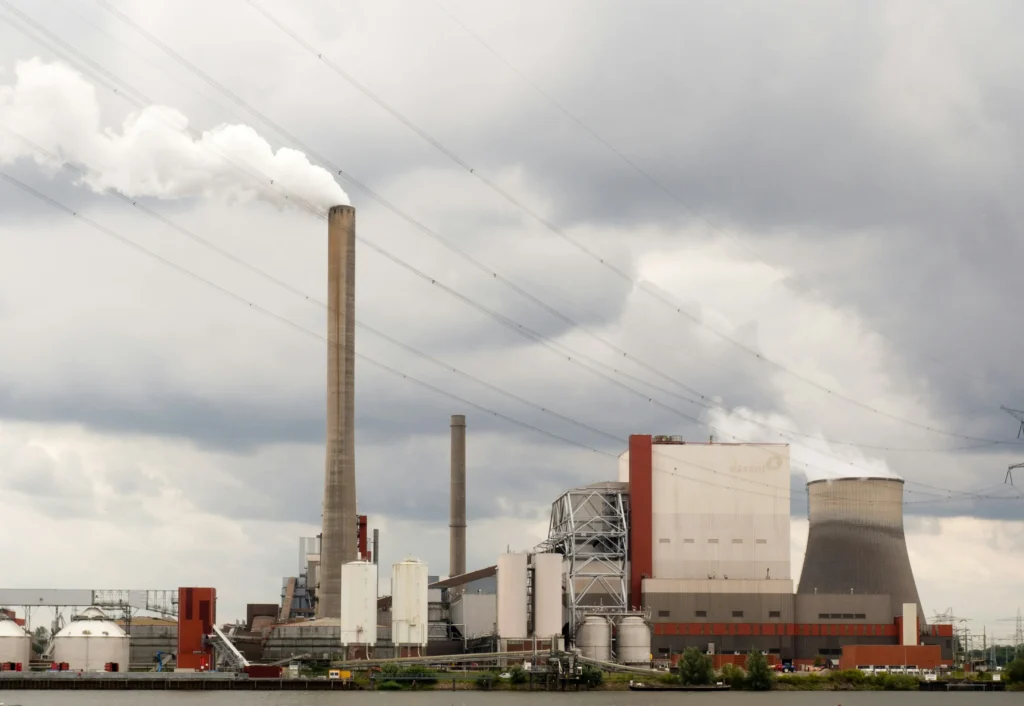
Is Coal Renewable?
3 minute readCoal is a natural energy source that has played a crucial role in powering human development for centuries. It forms deep within the Earth over millions of years through an intricate process involving the decomposition of plant material under heat and pressure. Despite its natural formation, the process is too…
Get $50 off your electric bill!
Use code BKVEJOINUS50
Enter your zip code to shop BKV Energy's affordable, fixed-rate Texas electricity plans. Use the promo code for $50 off your electric bill.
